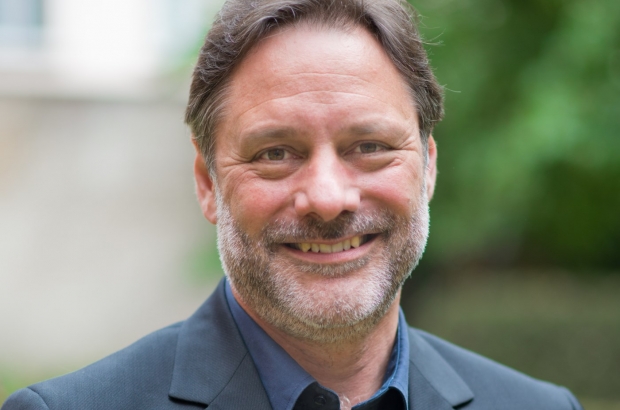- Daily & Weekly newsletters
- Buy & download The Bulletin
- Comment on our articles
The secret of the Parlamentarium’s success
In Brussels the corridors of power are notoriously labyrinthine. The European institutions have evolved in fits and starts since the cataclysm of the Second World War into a sophisticated system of checks and balances tasked with reconciling federal, national and regional interests—not to mention those of individual European citizens.
A complex arrangement, to be sure, but your representatives at the European Parliament have opened a visitors’ centre to show you how it all works. Since its inauguration in 2011, the Parlamentarium has become more than just an educational resource, though; it’s one of Brussels’ top-rated tourist attractions.
Stephen Clark, Director for Relations with Citizens, tells The Bulletin the secret of the Parlamentarium’s success. To begin, there was a demand.
“A lot of people were coming to Brussels to ‘see Europe,’” Clark says, “but there was nothing the public could actually see apart from the façades of a few familiar buildings. That was it. Since our job at the Parliament is to represent the citizens, we thought we should provide something more, something to explain the workings of our institution in particular and Europe more generally.”
Inspired by DC
The Parlamentarium fulfills a more prosaic function, too. When the Parliament applied to develop the site of its current complex on the edge of Luxembourg Square, regional authorities mandated that some 6,000 square metres be set aside for a socio-cultural space that would be open weekends.
“I was working for Secretary-General of the Parliament then,” recalls Clark. “At that stage, we had no viable solution for this huge space. It only hit us when we were on official business in Washington, DC. The Capitol Visitor Center was under construction at the time. We took one look and the idea was born.”
Not only is the Parlamentarium open every day of the week but admission is free. In keeping with contemporary architectural standards, the entire building is wheelchair-accessible and features assistive technology for visually and hearing-impaired visitors. It’s also linguistically accessible to all European citizens.
“This is the only museum in which all materials are available in 24 languages,” says Clark. “It wasn’t our idea, of course. It’s European Parliament policy. Everyone should be able to interact with the institution that represents them in their own language.”
Interacting with the EU
Inside visitors will find a multimedia exhibition on the history of the European Parliament plus an innovative - and immersive - 360-degree film about its workings.
“The film is my personal favourite,” Clark says, “and I’m not alone. It’s so successful that we’re now looking at the idea of exporting it around Europe, beginning with pilot programmes in Berlin and Strasbourg.”
There’s also a tunnel of voices, a gigantic interactive map of Europe and, at the end of the circuit, a lounge area where visitors can discover the stories of individual citizens. If that’s not enough, the Nobel Peace Prize awarded the European Union in 2012 is proudly displayed here.
The Parlamentarium sets aside a space for temporary exhibitions as well. This month sees the end of an exhibition of avant-garde fashion and the beginning of a multimedia showcase of food preparation practices from around the world. The exhibition is presented in the context of the European Year for Development, which is itself a joint initiative of the Parliament, the European Commission and the U.N. World Food Programme.
These attractions make the function and functioning of the European institutions that much more transparent.
“It’s important for citizens to know what happens to their vote after it’s been cast,” says Clark. “You could read a book or take a course about it. Or you could spend 2 hours at the Parlamentarium.”
Exeeding expectations
It’s not just for citizens, either. Functionaries can also benefit from the crash course in European politics. “Yes,” he confides, “some of our visitors are incoming staffers keen to get acquainted with their new jobs.”
Student groups and youngsters get extra educational opportunities, such as the interactive role-playing game which invites youth groups to become MEPs themselves. The game is designed for groups of 16-32 and requires advance reservation. Other offerings include the Luna treasure hunt for youngsters under 10 and an intergalactic competition for small groups of pre-teens.
All of this makes for a winning formula. “The Parlamentarium has been successful beyond all expectations,” says Clark. “In January of this year we welcomed our millionth visitor. We’re consistently ranked in the top tier of Brussels tourist attractions. In fact, by most estimates we’re just behind the Atomium. Our own surveys indicate a 90% satisfaction rate among our visitors.”
Clark and the rest of the Parlamentarium crew are looking forward to serving European citizens in the years to come, both in Brussels and abroad.
“Now that we’ve established ourselves here,” he says, “we’re planning to expand our virtual presence and follow up on our initiatives in Berlin and Strasbourg. If all goes well, the 360-degree films will be just the beginning of a franchise.”



















